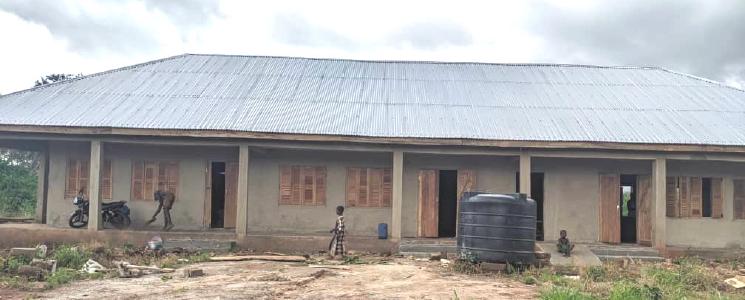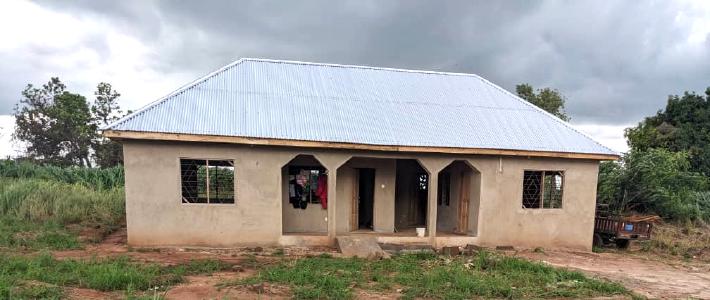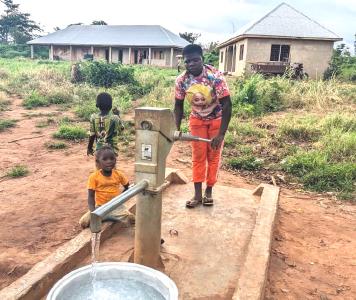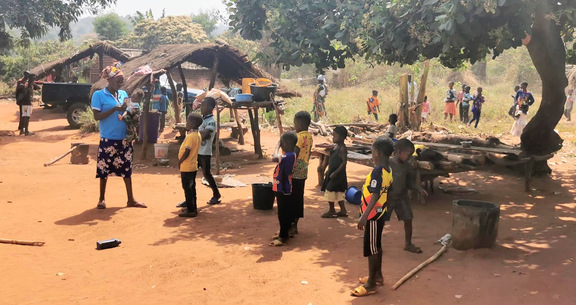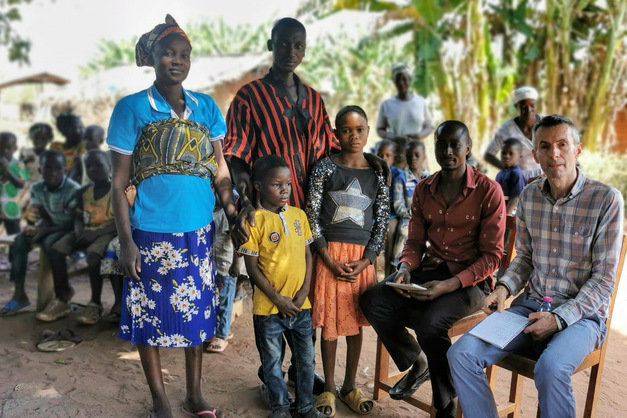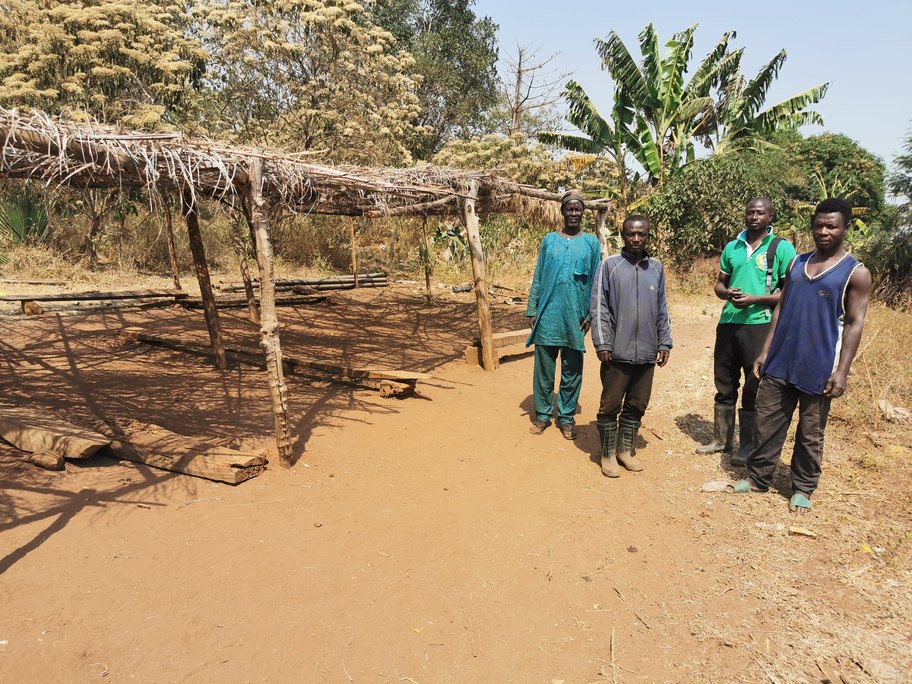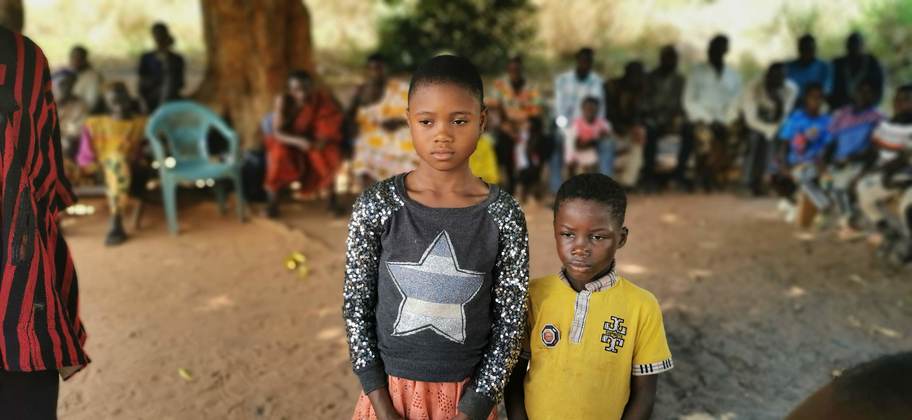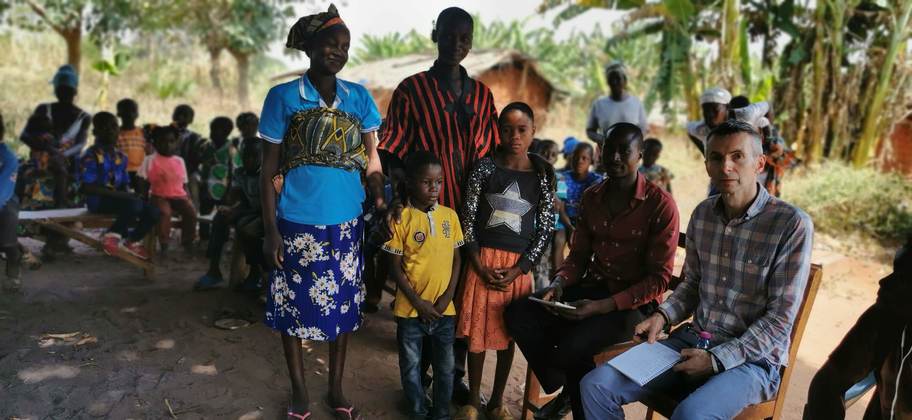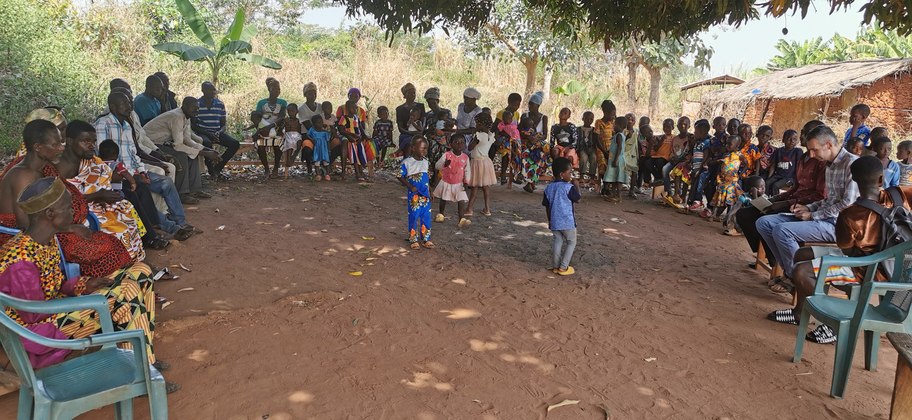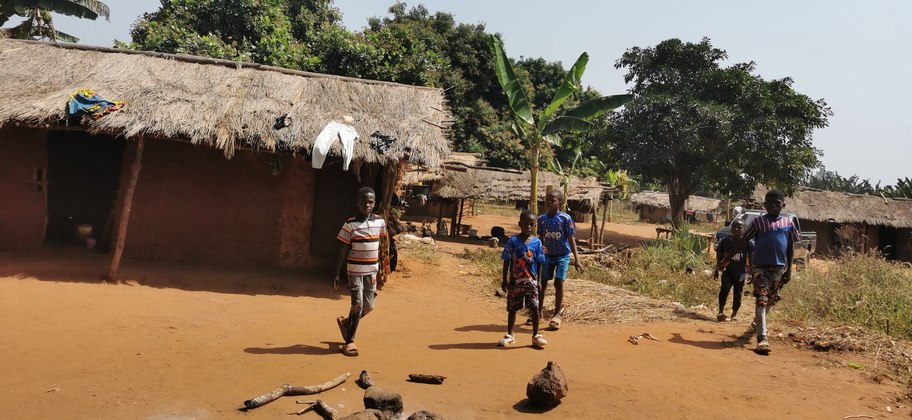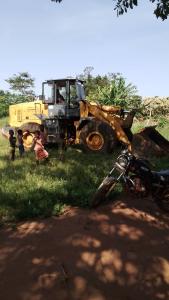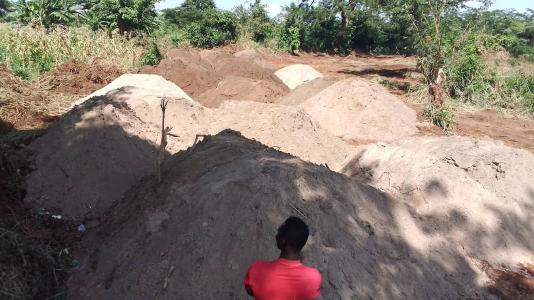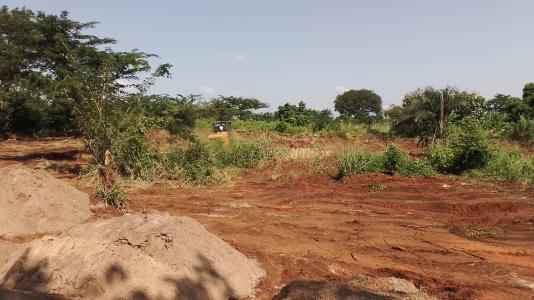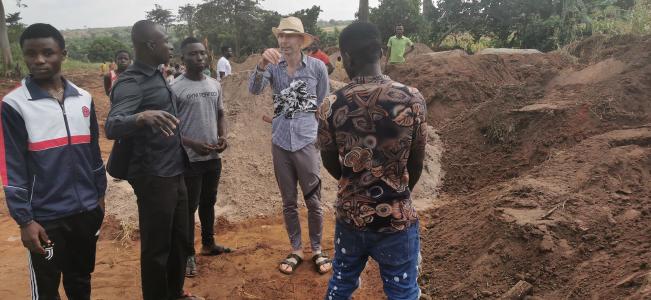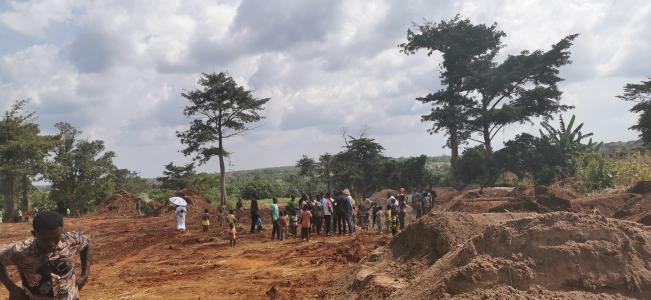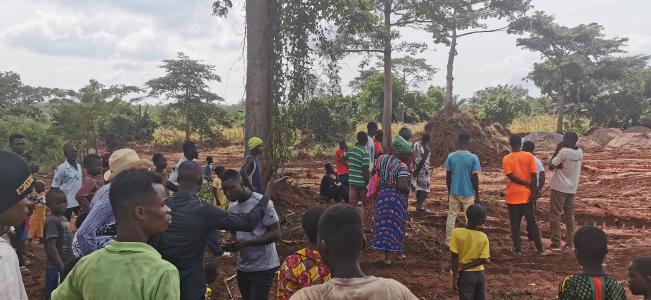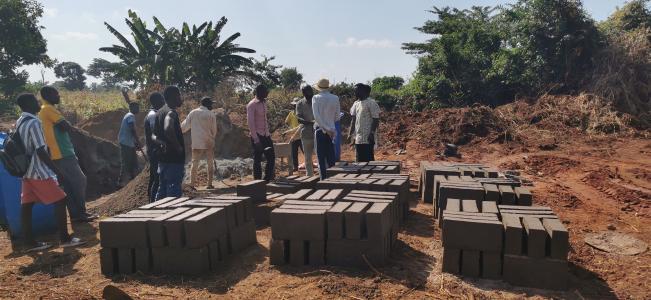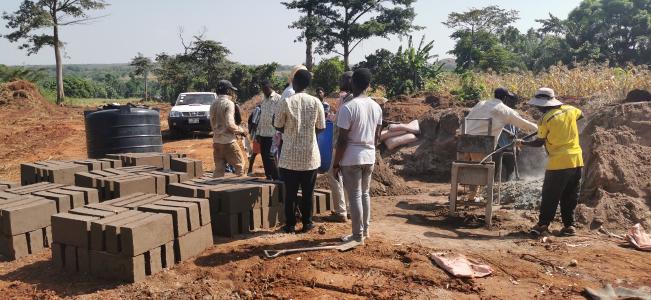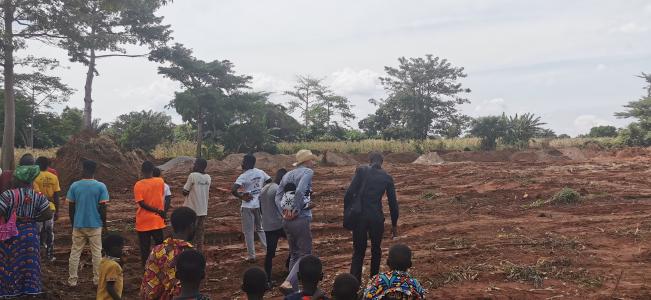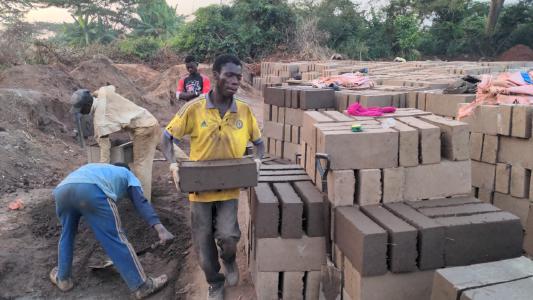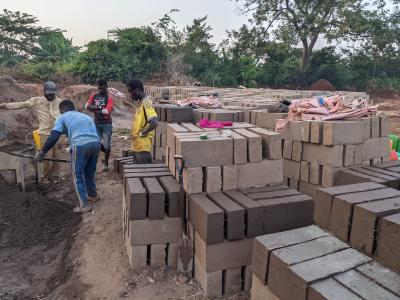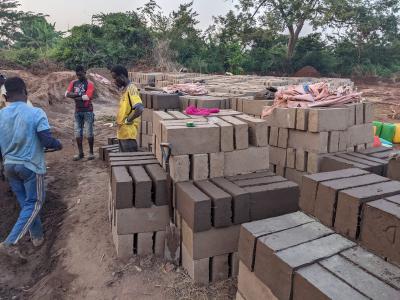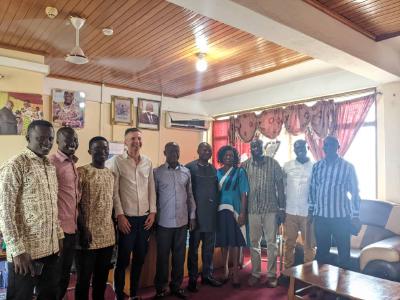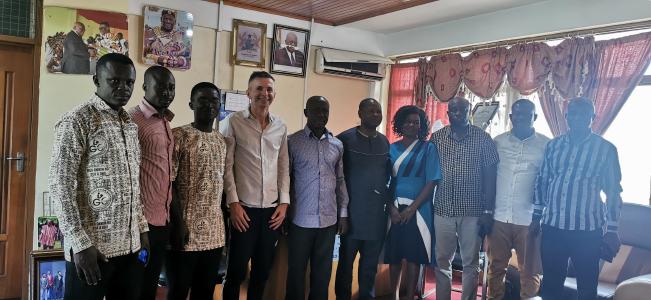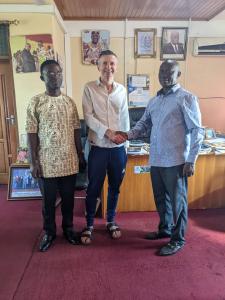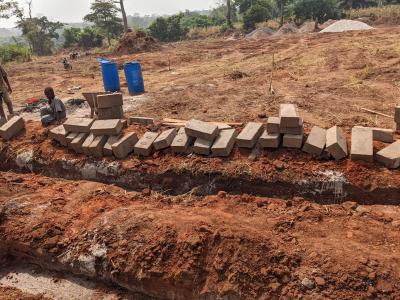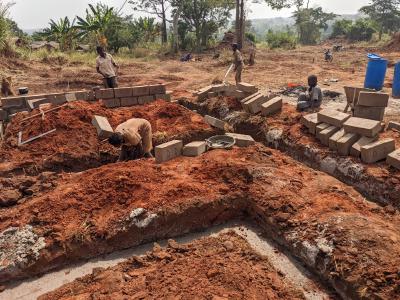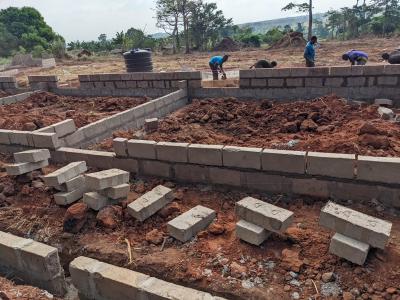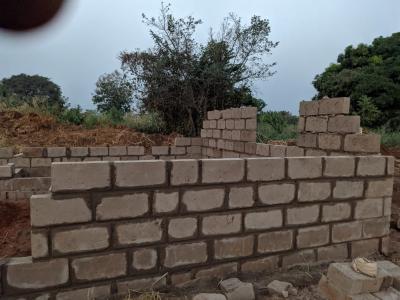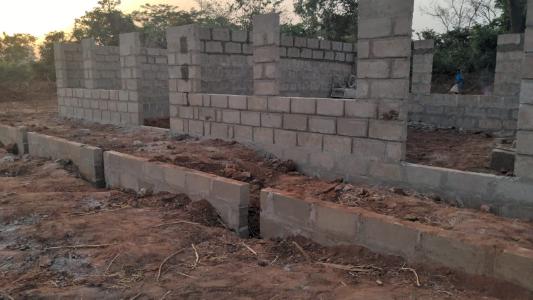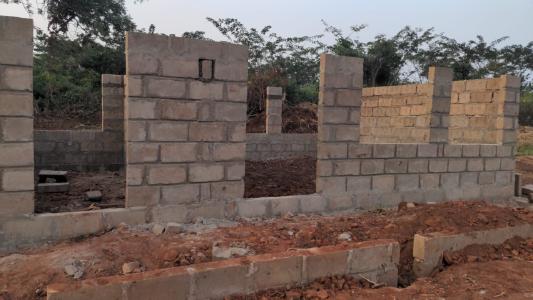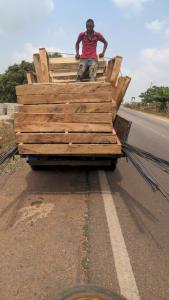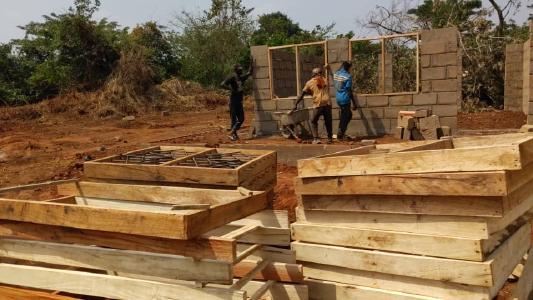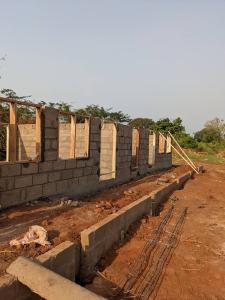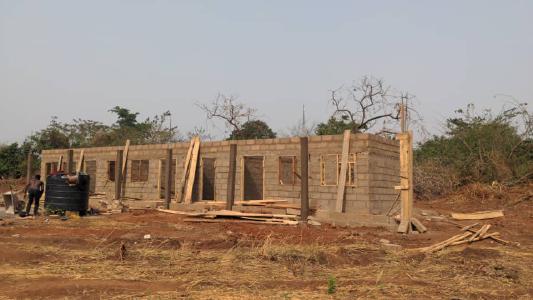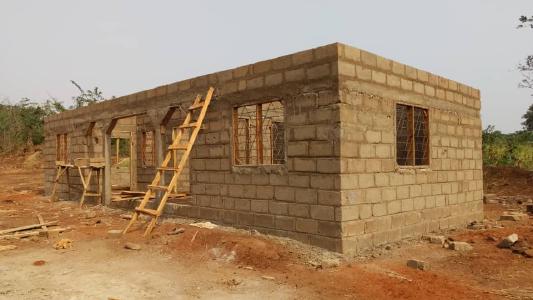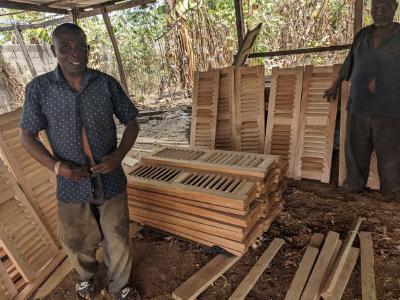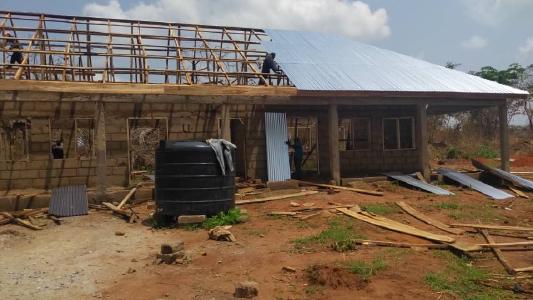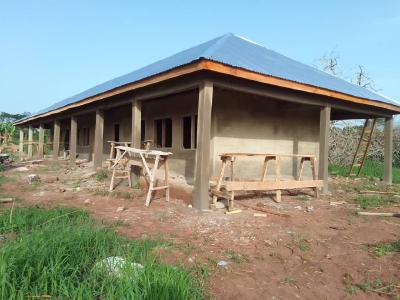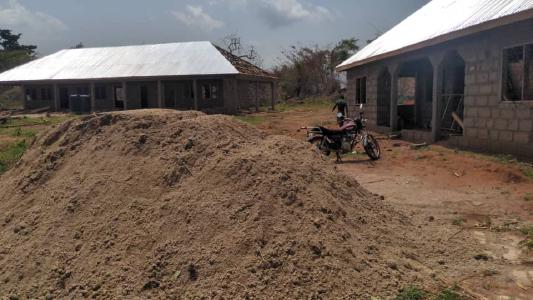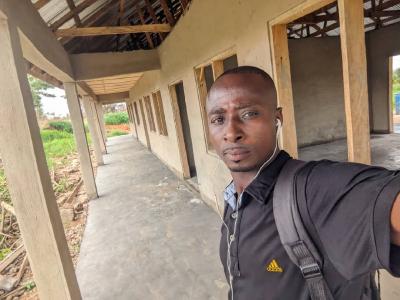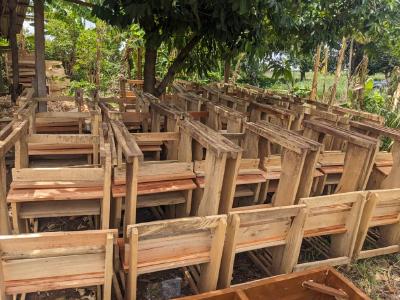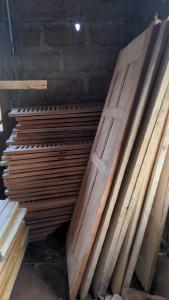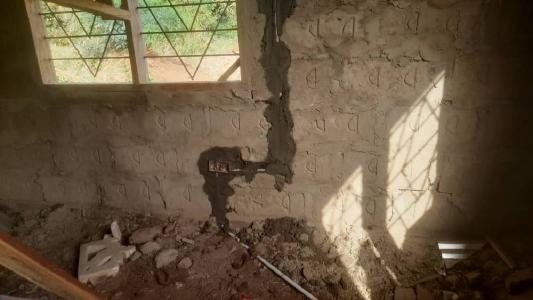School and teacher accommodation at Kontonho
Current status (June 2024)
The buildings are nearly complete. All that’s remaining is painting.
Handover to the education authority
Once completed, the building will be donated to the education authority, in return for its undertaking to staff it and run it as a school.
Rationale and planning for the project
Kontonho is a satellite community of Aframano, with about 170 people, about two hours walk from that village. Ordinary cars can’t drive there, because it’s a “hand-made” road with a very uneven surface and lots of obstacles; you either go on a motorbike, or on a high-axle vehicle with big wheels, like a delivery truck. Kwasi Alare first took us there in 2022, and we went again in 2023.
Kontonho needs a school for young children, specifically Kindergarten and the lower primary years. At the moment, these children have to walk to Aframano, a two hour journey, or to Kofiase, which is even further at 3-4 hours each way. Mark talked to Asoma, age 7, who is in Primary 2 in Aframano. He does the two-hour walk there and back every day. We also talked to Nana Afia, age 10 in Primary 4 in Kofiase. She does that 3-4 hour walk twice a day. If we can raise funds to build a school in Kontonho, this will be a huge contribution to their education. The pre-school in Kotonho is projected to allow access to education for 90 pupils.Who will run the school?
Similarly to the situation for the school in Aframano, we will hand over ownership of the school to the municipal department of education, which undertakes to staff it and run it as a school.The community has made an informal school, pictured, so that young children incapable of making the two-hour walk can get some education. Making a proper building staffed by teachers will be support the delivery of education for local children.
Teacher accommodation
Teachers can’t commute to Kontonho, because it is too remote. Aframano is already very remote, and Kontonho is two hours by foot from there. Teachers can go by motor bike, but it is still too far to commute daily. To attract teachers, we will build three small rooms that can each accommodate two teachers who stay overnight during the week. Our planned borehole project will ensure that teachers can access clean water, and will also help assure that teachers will want to teach at the school.
Why is this project so expensive?
This project is about 50% more expensive than the school and teacher accommodation in Aframano. The school in Aframano has two classrooms with two offices, while the school in Kontonho will have three classrooms, two offices, and three bedrooms for teacher accommodation. Also, the teacher accommodation in Aframano consisted of building refurbishment, whereas here we will build from scratch.
Kontonho can be accessed only via a “hand-made” road with a very uneven surface and lots of obstacles. Normal cars can’t drive there. High-axle vehicle with big wheels, like delivery trucks, can get there with some difficulty. The community will spend some days cutting branches and removing bushes to widen the road, so that the large trucks can get access. But still, builders will charge more in Kontonho compared to Aframano, because of delivery and accessibility issues.
Inflation is another factor.
As in the case of the school in Aframano, we will make sure we adhere to the Department of Education’s construction standards, so that they will adopt the building and staff it and run it.
Progress photos
Planning and discussion (January 2023)
Fundraising (March-November 2023)
No photos to show of that ☻.
Clearing the site (November 2023)
Making the blocks (December 2023)
Planning and discussing the handover (December 2023)
Building! (January 2024)
Transporting and installing window frames (January 2024)
Ready for the roof (February 2024)
Getting there (March 2024) - roofing and windows
Status (April 2024)
The two buildings are making good progress! On the left is the school building in its current state, and next is a pic of the two buildings (school and teacher accommodation) side by side (the heap of sand in the foreground was for the plastering, now completed). We hope that the buildings will be completely finished by May 2024.
The third picture shows the recently completed plastering, and the final one shows the school furniture before it is transported to Kontonho.
Although the community has no electricity, we intend to install solar panels on the teacher accommodation to allow people to charge phones and have night-time lighting. Therefore the accommodation building is being wired – see photo. The other photo shows the window shutters and doors, ready to be installed.
